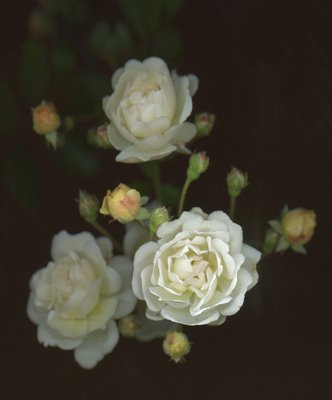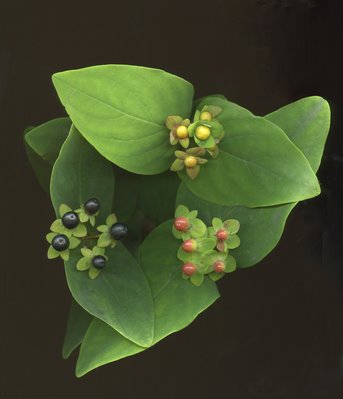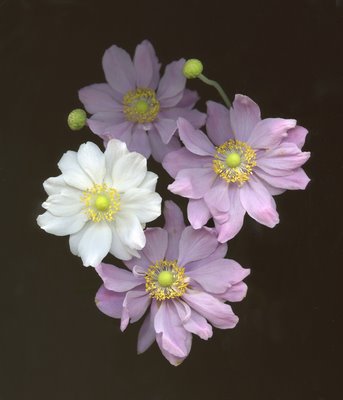French Ramblers, Hypericum, A Moth & Soldiers In The Garden
Monday, October 15, 2007

Most of my roses are on the wane. Some have fat buds but you know they are not going to open. But I was surprised yesterday afternoon to see that Rosa 'Sweet Juliet' had one nice open flower and its scent was carrying far in spite of the cool afternoon. I was more surprised to find that Rosa 'Ghislaine de Féligonde'(left) had a nice cluster with buds and open flowers. I only purchased her this year. Her name is French but my Australian, The Ultimate Rose Book by Sterling Macoboy states:
Pronounce the lady's name as 'Elaine de Féligonde' and you have got over the main obstacle to the revival of this rose, its awkward Flemish name. It is rarely seen these days, but it is one of the most charming Ramblers, with the added bonus that it sometimes bears a second crop of flowers. The fat little buds are quite strong a yellow, but they open to the palest cream with pink tints. Foliage is glossy green and resistant to mildew. It was raised by the French firm of Eugene Turbat et Cie and introduced in 1916. 'Ghislaine de Féligonde'is of fairly restrained vigor.
'Golfinch' x unknown
Repeat Flowering
Right next to Ghislaine I spotted the curious effect of Hypericum androsaemum 'Albury Purple' whose fruits were showing the transition from yellow to blue black. Hypericums have the lowly popular name of St. John's wort because of its traditional flowering on St John's day, 24 June. The genus name Hypericum is derived from the Greek words hyper (above) and eikon (picture), in reference to the traditional use of the plant to ward off evil, by hanging plants over a picture in the house during St John's day.

There are several species of Hypericum, all having yellow flowers. Most are considered ordinary but I have found that my particular cultivar is a fine garden plant. It sometimes gets rust so I have to tear out the plant. But Albury Purple seeds itself so I am always able to replace it.
Not far from Ghislaine and Albury Purple I found this moth. It was fluttering its wings just a bit, about to die in the cold of the coming evening.
The moth might have searched for protection under my Japanease anemones, Anemone x hibrida 'Margarete'(pink) and 'Whirlwind', white) (below). I call them the soldiers of the garden because you plant them in the back of a bed and they soon march forward. But how can I complain when they are still in bloom in mid October?








